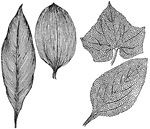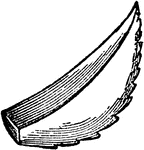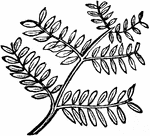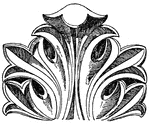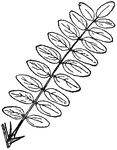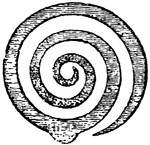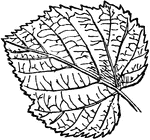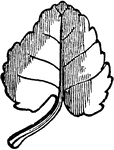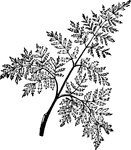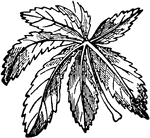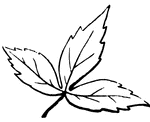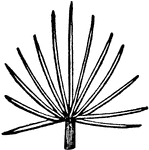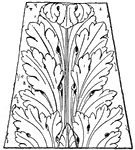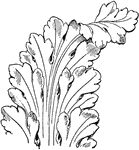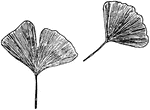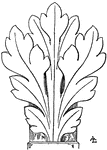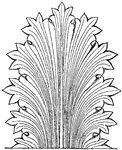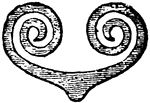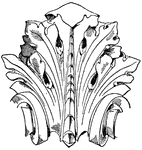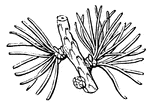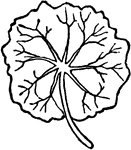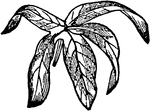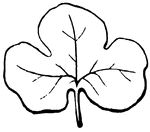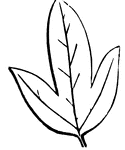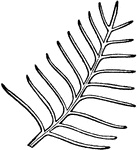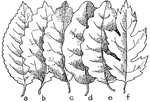
Leaf Margins
"Marginal forms of leaves: a- serrate, or saw-toothed. b- dentate, or toothed. c- crenate, or scalloped.…
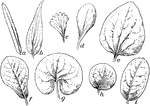
Leaf Shapes
"General outline of leaves. a, linear; b, lanceolate; c, wedge-shaped; d, spatulate; e, ovate; f, obovate;…

Leaf Tips
"Tips of leaves. a, acuminate or taper-pointed; b, acute; c, obtuse; d, truncate; e, retuse; f, emarginate…

Compound Leaf
This is an example of a compound leaf. Pinnate leaves have their leaflets arranged along the sides of…

Compound Leaf
This is an example of a compound leaf. Pinnate leaves have their leaflets arranged along the sides of…

Compound Leaf
This is an example of a compound leaf. Pinnate leaves have their leaflets arranged along the sides of…
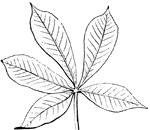
Compound Leaf
This is an example of a compound leaf. Palmate leaves have their leaflets arranged on the very end of…
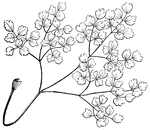
Compound Leaf
This is an example of a decompound leaf structure, meaning it is divided three or four times.

Cross-section of a leaf
Cross section of a leaf, showing the breathing pores and intercellular spaces. The small dots are grains…

Diseased Leaf
"Transverse section of a diseased patch in the leaf showing the hyphae of the fungus pushing between…

Fork-Veined Leaf
"Fork-veined leaves are those in which the primary veins divide into two nearly equal secondary veins,…
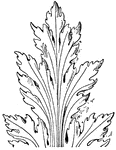
French Leaf Renaissance
The French Renaissance Leaf design tend to look more formal. This design was found in a church in Epernay…
Lanceolate Leaf
"Lanceolate, when it is three or more times as long as it is broad, and rounded at the base, and tapering…

Oblong Leaf
"When a leaf is bounded by a regular curve, and it three or more times as long as it is broad, it is…

Ovate Leaf
"It is said to be ovate when it has the outline of the longitudinal section of an egg."—Darby,…

Parallel-veined Leaf
This type of parallel-veined leaf has veins running from the base of the leaf to the point.

Parallel-veined Leaf
This type of parallel-veined leaf has veins running from the midrib of the leaf to the margins.
